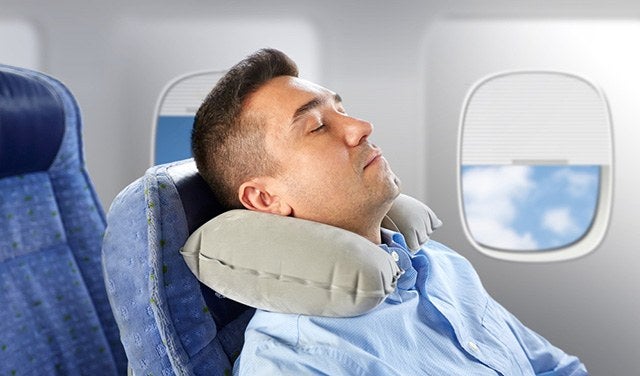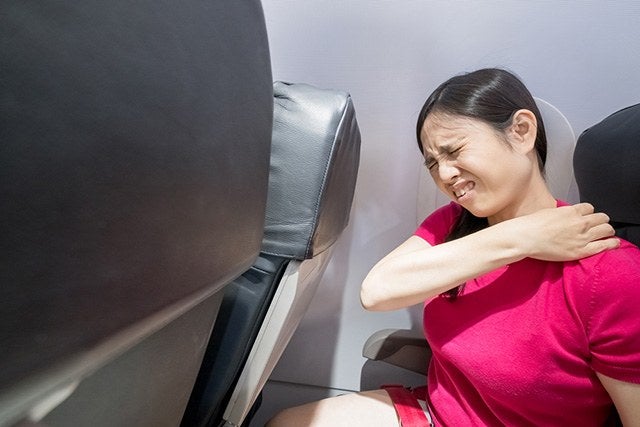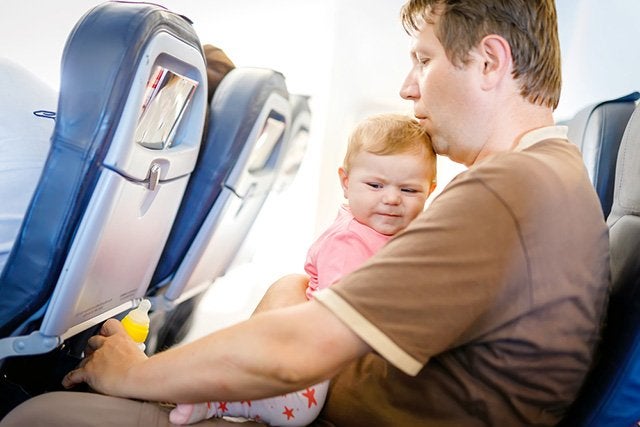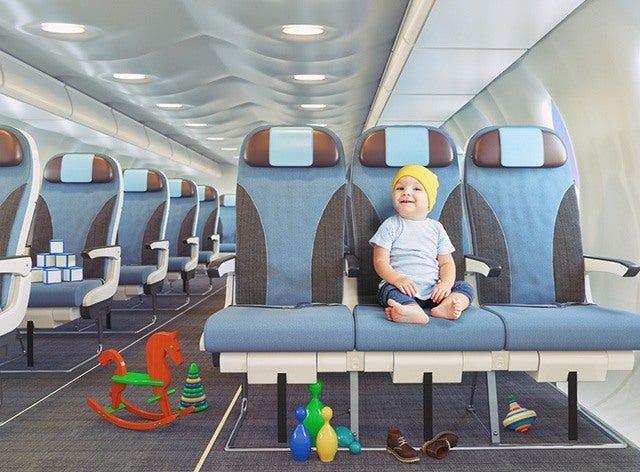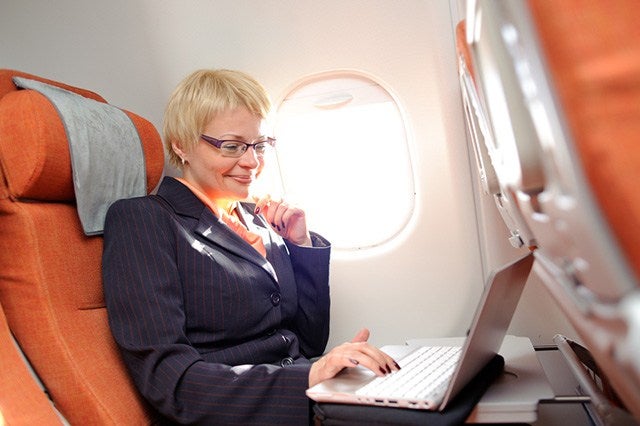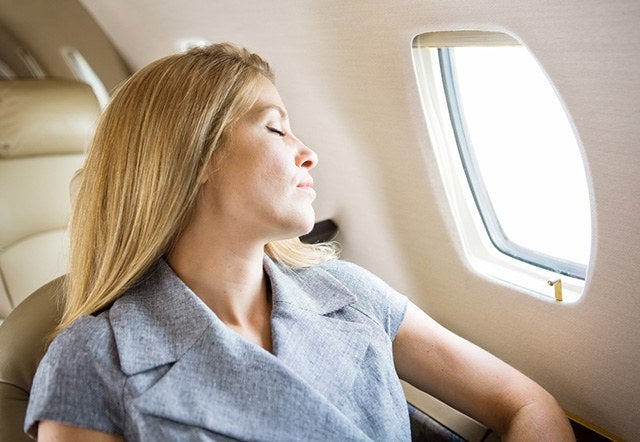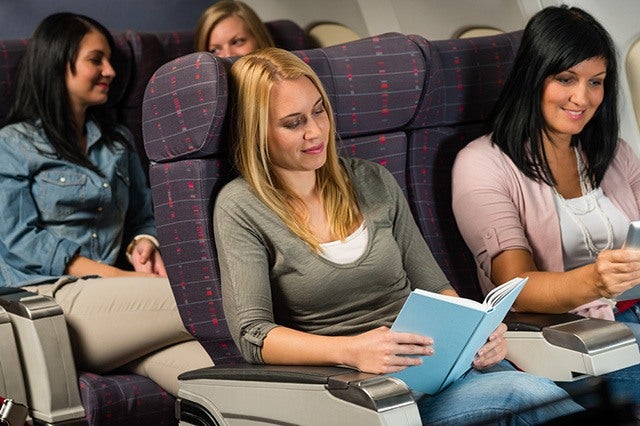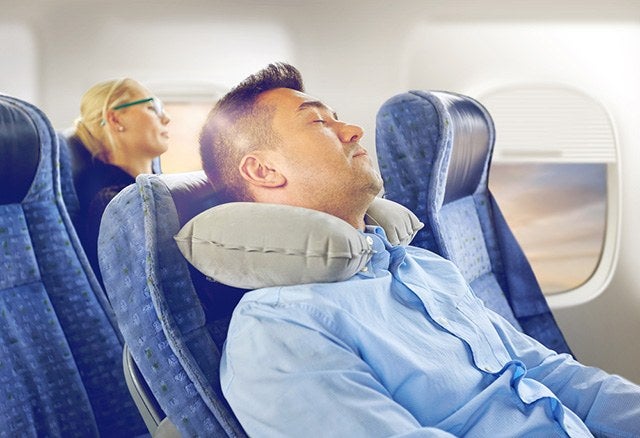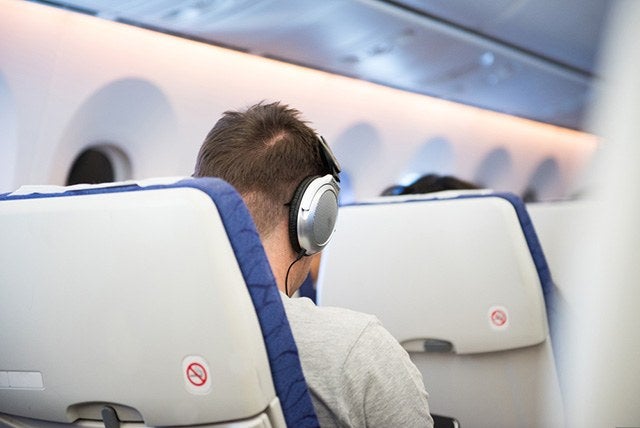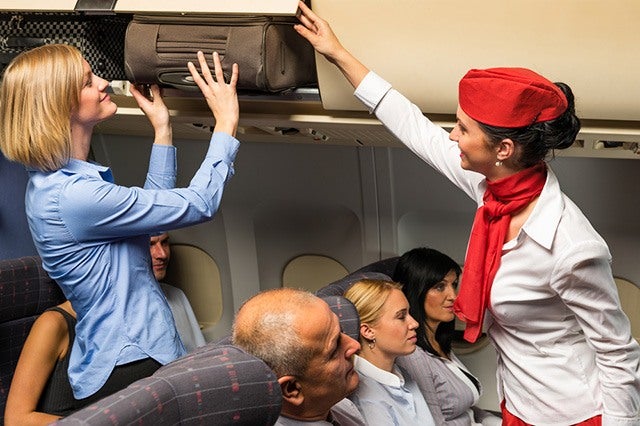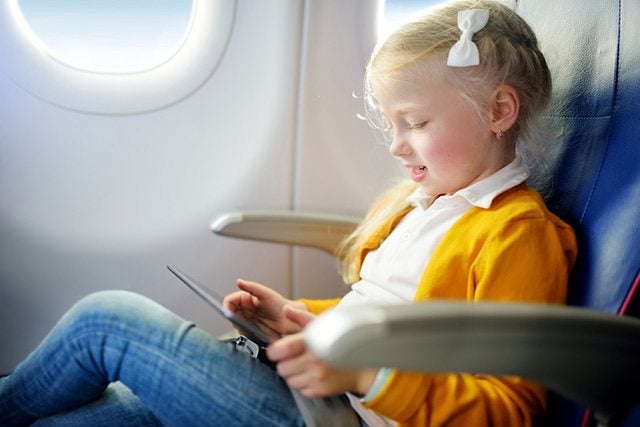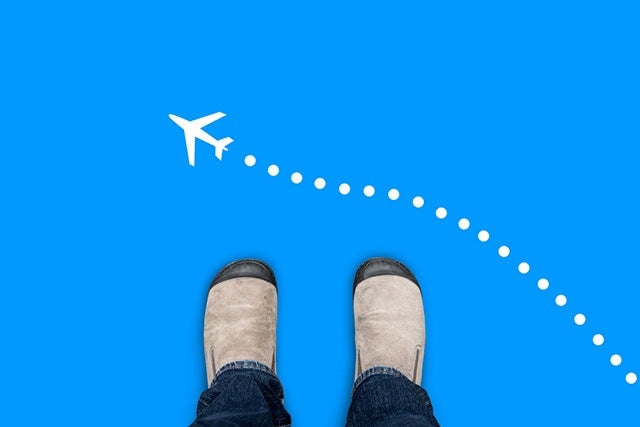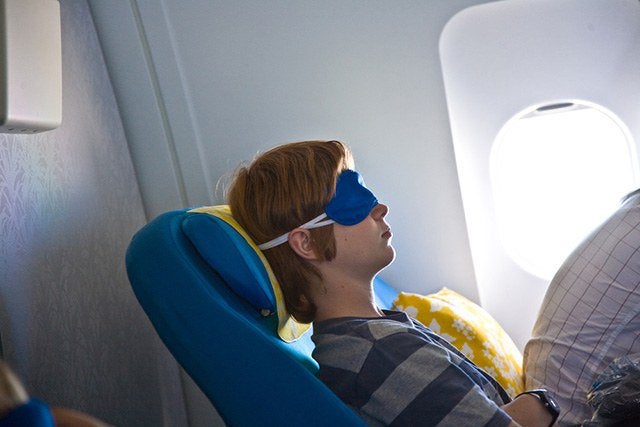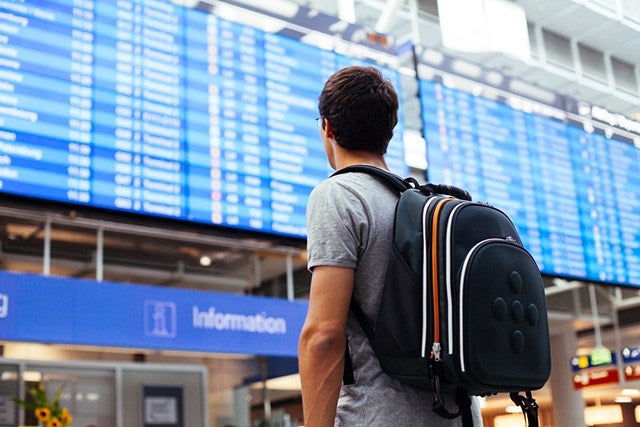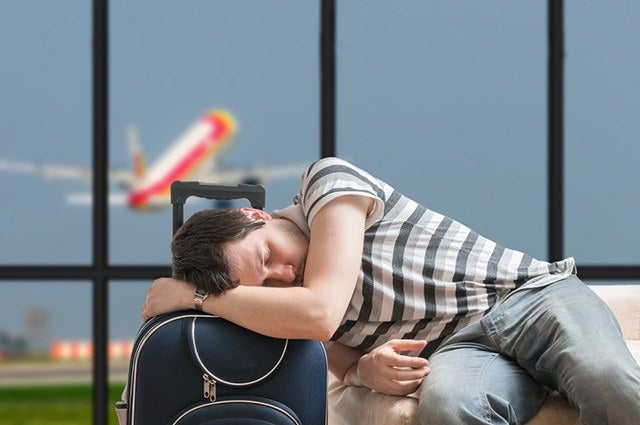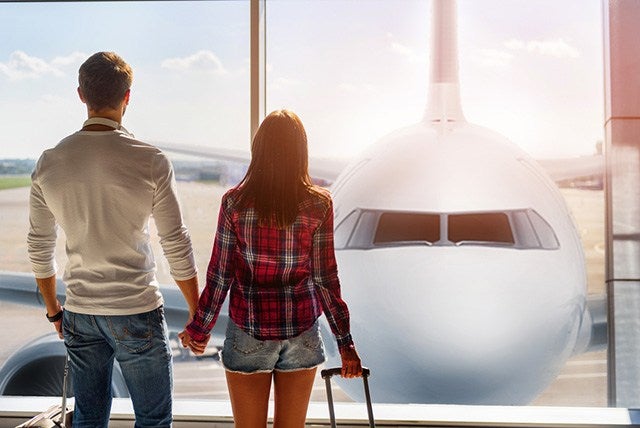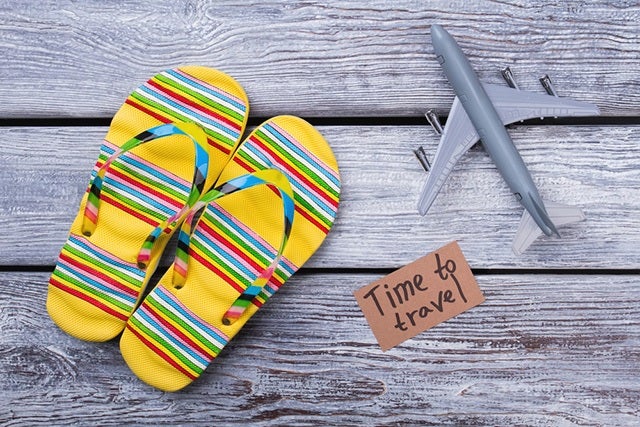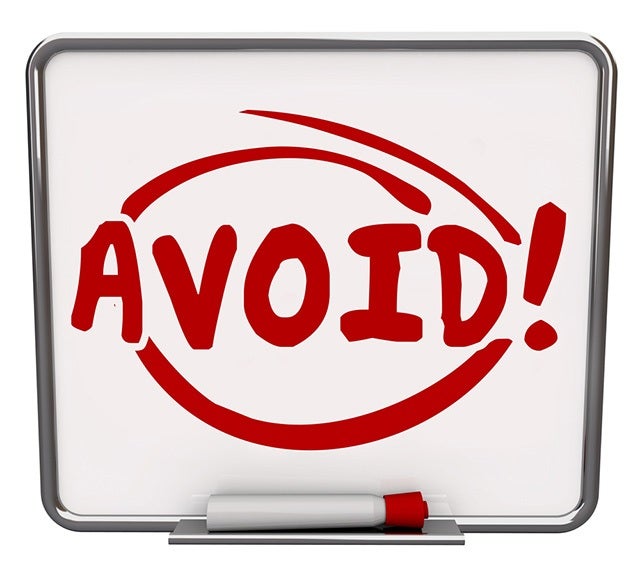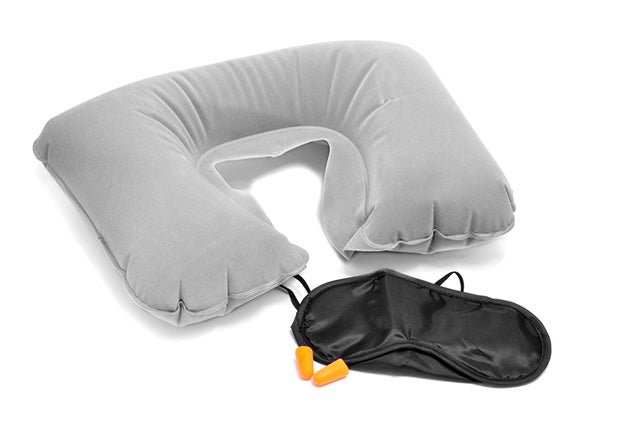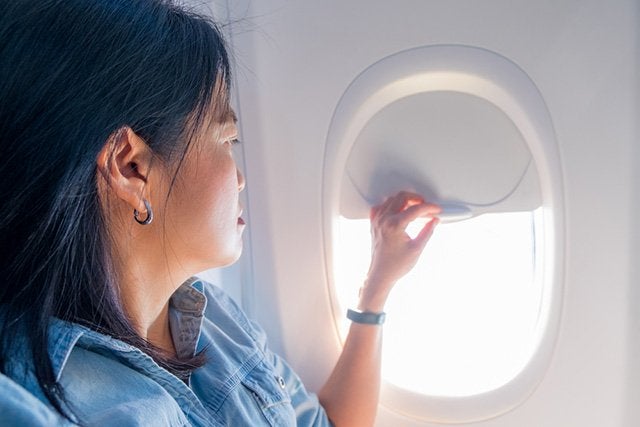Flying. Jetlag. Perhaps one of the best views of how difficult travel can be on a person comes in the form of Edward Norton’s monologue in the movie “Fight Club.”
“You wake up at O’Hare. You wake up at Sea-Tac…Pacific, Mountain, Central. Lose an hour. Gain an hour. This is your life…You wake up at Logan.”
Whether you’re traveling for business or pleasure, frequent flying can really be a drain on your body, especially if you have trouble sleeping on the plane. There are many issues that can lead to an inability to get some shut-eye on a flight, some of which are physical and others that are more psychological. If you can’t overcome these issues, you could face severe consequences, both in your daily life and during your trip.
Despite the difficulty, there are plenty of things you can do to make it easier to sleep on an airplane. By assessing the situation and determining what problems and details keep you awake, you can better prepare to neutralize those problems. Here are some tips for sleeping on a plane, most of which are pretty simple and don’t require any extra cost or a lot of planning, once you get used to the routine.
Issues with Flying and Sleep
Arm Pain due to Narrow Armrests
The majority of people fly economy, with first class and business class often being cost prohibitive, especially if you fly frequently. While first class offers large seats and adequate leg room, the truth is that economy seating can be incredibly cramped. Narrow armrests are often shared with strangers, and seats only recline so far, sometimes cramping the person behind you. And with regulations on carry-ons being stricter, you may find yourself even worse off with one of your items tucked under the seat in front of you, further reducing your leg room.
Backseat Issue, Small Leg Space
In some rows, like the exit rows and bulkhead rows, the chairs may not lean back at all, which is quite a problem for some. And in all rows, you have minimal movement anyway, with the rows so close together and the need to accommodate the people behind you. Certain rows have heavier traffic flow through the aisle, such as at the back of the plane by the restrooms, which can keep you awake as well. And though it might seem cumbersome to have to crawl over other passengers to get to the restroom when you opt for a window seat, consider that others will be climbing over you if you decide on an aisle seat that offers easier access to the lavatory.
Let’s take the issues one at a time so that you don’t get overwhelmed with all the things over which you can lose sleep, as much from worry before the flight as you would during the flight.
Choose Your Seat Wisely
Perhaps the choice of seats can have the biggest impact on your ability to sleep on a plane. Several factors are involved in choosing where you sit in order to find optimum comfort, even in the economy cabin.
Sit in the front and avoid rows lacking reclining seats. While you still have to be mindful of the passengers behind you when you recline, that small angle will help tremendously with relaxation and thus avoid back and neck pain.
Rows in the front have a little more leg room, and you aren’t plagued with foot traffic to the restroom, noise of food prep from the galley, fumes from the engines, and other nuances that make flying at the back of the plane less conducive to sleep. Also, people with seats toward the front typically board earlier than those in the back, which means that there’s more likely to be room left in the overhead storage bins for your carry-on so you won’t have to put it under your feet and cramp your space.
Choose a window seat. This helps for several reasons. First, you can control the amount of light exposure you have. With too much light, your body will work against the idea of sleep, refusing to produce the natural melatonin that helps you fall asleep and stay asleep. In a window seat, you can pull the shade on the window, dimming the area around you. In addition, no one will be crawling over you to go to the restroom or get up to stretch. Finally, you have something to lean on, even if your headrest isn’t adjustable.
Sit on the side on which you usually sleep. If you sleep on your left side, you’ll want to sit on the left side of the plane. This makes it more natural to lean the direction in which you normally sleep for better comfort.
Pack Light but Smart
Most airlines allow for a carry-on and a personal item (like a purse) these days. However, some still offer the opportunity for two carry-ons. You might want to question the intelligence of carrying this much luggage onto the airplane, though. Packing lighter means you’re more likely to fit your luggage in the overhead compartment and not stuff it under your feet. Consider only packing essentials, and unpack the things that are going to help you sleep comfortably before placing your bag above your head.
Book, magazine, etc. Try to avoid laptops, tablets, and phones. The backlight will stimulate the brain the same way that sunlight does, and you’ll find it difficult to sleep.
Blanket and pillow. Make sure you wrap yourself in your blanket early on so that you’ll be comfortable with the temperature in the cabin drops. Then, pull the seatbelt on over you and your blanket so that flight attendants can clearly see that you’re wearing it when the seatbelt light is on. If you have a neck pillow, you might consider wearing it backward. Travelers have found greater comfort in avoiding the ‘nodding’ forward with the pillow as opposed to trying to lean back. Regular pillows are perfect for leaning against the side of the plane.
Isolation tools. Bring a pair of noise-canceling headphones that will help negate disturbances around you. Don’t tune into the in-flight movie or any loud, upbeat music, as these have negative effects on the ability to sleep. Rather, turn on white noise or plug into something soothing, like classical or meditative music, which will slow your mind and put you to sleep. This requires bringing a music player of some kind as well. If you would rather, wear earplugs, though they aren’t quite as effective. Also, bring an eye mask to block out light, especially since your neighbor may turn on his or her reading light or you may not be able to score the window seat and close the shade.
You may want to read: The Best Wireless Sleep Headphones
Other In-Flight Considerations
When it comes to avoiding disturbances, you should be proactive. Rather than risking being woken up for snacks and drinks during the in-flight service, let the flight attendant know that you’ll be sleeping and aren’t interested in the service. Or, if you are, wait until the service has been completed in order to close your eyes. It will be quieter and more settled down once the single serving snacks or, on long flights, meals have been distributed anyway.
Consider your posture as well. Don’t cross your legs, since doing so and then turning to sleep will pull at the muscles in your lower back and potentially tweak something that will leave you in a great deal of pain or, at the very least, trying to find room to cross them in the other direction to balance out the pull. Also, having your legs at odd angles can cause two problems you want to avoid:
Cutting off circulation
with the cramped space, if you cross your legs, you can essentially pinch nerves or cut off circulation to your lower extremities. Be conscious of the negative effects these ailments can have, including pain and even possibly long-term damage to nerves.
Swelling of feet and ankles
keeping your feet on the floor or at least on a footrest with your knees slightly bent can help avoid edema, or swelling from excess fluid gathering in your legs, ankles, and feet. This discomfort could last throughout your entire trip, and potentially end up being a problem to address with a doctor should it persist.
You can also help your posture by adjusting the headrest on your seat. Even if you can’t recline, most planes are now outfitted with headrests that fold in on the sides, giving you something comfortable to lean against so you aren’t forced to bend your back to rest your head on your hand.
If for any reason you brought a blanket or a pillow that you don’t need – maybe it’s just not cold on the plane – consider rolling them up and using them as a lumbar pillow, helping to cushion your lower back in a better position. This will better simulate a recline without the gap between your back and the seat that could lead to back pain. You might also want to put the roll under your knees, keeping them properly bent and allowing you to more easily stretch out and take full advantage of whatever room you have.
Preparing in Advance
Humans have a natural circadian rhythm – a cycle by which our bodies function. It works sort of like the tide of the ocean, which is affected by the pull of the moon. For our bodies and minds, sunlight and daytime set the schedule. We’re wired to be awake when it’s day and sleeping when it’s night. When for any reason you’re forced to work against that natural daily progression, it can make life far more difficult. You’ll find that you’re perpetually tired, have trouble focusing, and essentially move around in a haze or have to sleep.
Extreme versions of this happen with flying, resulting in jetlag. Especially on a very long trip with several hours of flight and crossing multiple time zones, jet lag can negatively impact your ability to function well, whether for business or pleasure, not only when you reach your destination but also when you return home. Flying west to east is difficult, but flying east to west is even worse, as the day is ‘extended’ by a number of hours, depending on how many time zones you cross.
Assuring your ability to sleep on the plane can help reduce the problems with jetlag and potentially assist with recovery in either direction so that you’re on your game and can be active without draining yourself. So, aside from packing your bags accordingly, you should have other preparatory methods in mind to help ease you into the new location without too much jet lag.
Consider how you dress. Gone are the days when you’re expected to fly in your Sunday best. There used to be fewer people on each flight, and you could take up more space. That meant it wasn’t as uncomfortable to fly in dress clothes. However, now, with planes packed to capacity and space extremely limited, you want to be as comfortable as possible while you fly so you can sleep. While you may not want to necessarily fly in pajamas, you should consider loose fitting clothes like sweats or jogging pants that keep you warm and allow you a greater range of motion.
Have a place to store your shoes. Maybe you’re not keen on being barefoot in public, but that’s not what we’re saying. You should consider wearing or carrying with you a pair of thick socks so you can take off your shoes for ultimate comfort. However, be warned that your feet could swell if you don’t take the proper means to avoid this, and then you’ll have difficulty getting those shoes back on. If you can’t stand being in just socks, pack a pair of cozy slippers you can slide on before you get your shuteye.
Alter your sleep schedule in advance. Are you flying overnight and arriving in daylight at the new location? You’ll probably have an easier time sleeping on the flight based on the cycle of darkness outside. However, if you’re flying during the day and it will also be daylight when you arrive, consider waking earlier than usual the morning of your flight, and perhaps getting to bed a little later the night before. This will help you be more tired on the flight and give you a greater chance of sleeping soundly.
Don’t eat a large meal before flying. If you eat something large and heavy within a couple hours of your flight time, you’re likely to have discomfort from the food weighing heavily on you as well as the possibility of indigestion creeping up on you if you try to sleep through it. Also, avoid drinking caffeine for at least three hours before boarding your flight. The last thing you need is to be too alert to sleep. Also, limit your intake of liquid so you avoid multiple trips to the lavatory waking you up. Stick to water and juice on the plane as well to avoid this hazard. Also, avoid alcohol. While a drink may help you get drowsy and fall asleep, it won’t last. Studies show that alcohol also makes you more prone to wake frequently and sleep restlessly.
An Ideal Trip
Ideally, you should have a routine for flying that makes it simple and teaches your body to automatically go to sleep on the plane. Start by boarding at the earliest possible call so that you have time to get settled. That includes pulling your supplies from your carry-on before storing it above you, such as your eye mask, headphones, pillow, and blanket, as well as any non-backlit reading material you have. Be sure to settle your blanket in a way that attendants can still see you’re wearing your seatbelt.
Arrange your feet and knees accordingly, and make sure your headphones are prepared to use after takeoff when electronics are again permitted.
Close the window shade to avoid being stimulated by sunlight or the lights of the airport at night. If you don’t intend to partake of in-flight service, let your attendant know, and as soon as you’re in the air, you can recline your seat, put on your headphones, and relax in your preferred sleep position. If you want to get something from the service, wait to get truly relaxed until the attendants have come through.
In order to feel more awake on arrival, set an alarm that will wake you up 30 minutes prior to landing. This is about when descent usually starts. You’ll be able to stretch minimally and blink awake, letting in some light if you need to in order to assist you waking up. You can gather your things and prepare to put them away upon pulling into the gate, and you can exchange your slippers for your shoes without being in a rush. By the time you’ve done all of this, you’ll be ready and awake so you can face the day.
If it’s nighttime where you’ve landed, you should avoid the light and perhaps wake up a little earlier, giving you time to get your things together while also taking away some of the sleep time on the flight in favor of sleeping at your destination. Balance this with the amount of darkness left in the current location.
What About Sleep Aids?
Using sleep aids is a personal choice. If you have a very long redeye flight, this could help to assure you sleep through the night. However, be cautious with the use of sleep aids. They tend to have more drawbacks than perks.
Sleep aids often leave you groggy when you wake up, some of them even mimicking the feel of a hangover. This isn’t exactly the impression you want to make on business associates or the way you want to feel your first day of vacation.
If you travel frequently, taking sleep aids can be habit forming and addictive, something you want to avoid for health purposes.
Natural aids such as melatonin may be helpful in creating a gentle sleep that mimics the body’s typical sleep process since your body makes melatonin.
Adjusting your sleep pattern to the best routine for your flight and the ability to sleep onboard is far preferable to using a sleep aid, whether prescribed or over the counter. It also makes more sense than using alcohol as a conduit to sleep or eating a heavy meal that leaves you sleepy.
You may want to read: The Best Sleep Aids for Flying
Flying and Sleeping in Comfort
You could spend the extra money for a business or first class seat the next time you fly so you can be more comfortable and sleep better, but considering the difference in cost, you should consider if it’s worth the extra cash to get a few extra inches of space. Really, there are too many ways you can assure a better sleep experience in economy class, where you don’t have to pay more out of pocket and can still create an environment conducive to sleep.
New innovations are coming about all the time. In fact, there are researchers looking into ways to make economy class seating more like what’s found in first class. The problems at the moment are spurred from the fact that economy seating is meant to hold more people in a smaller space, and the fact that, in order to do so, the seats need to be lighter.
In years to come, we may see the release of a seat in the economy class that twists so that you can lean one way or the other more comfortably, or get more leg room. There may be innovations regarding the way the recline feature works, allowing you to lean back the full amount without bothering the person behind you leaning forward on the tray table to sleep.
At the moment, take advantage of the suggestions here to make your next flight more enjoyable and get better sleep while onboard without interference until you land. Taking the steps to improve your own experience will certainly give you a sense of control and help you better your situation in the process.
